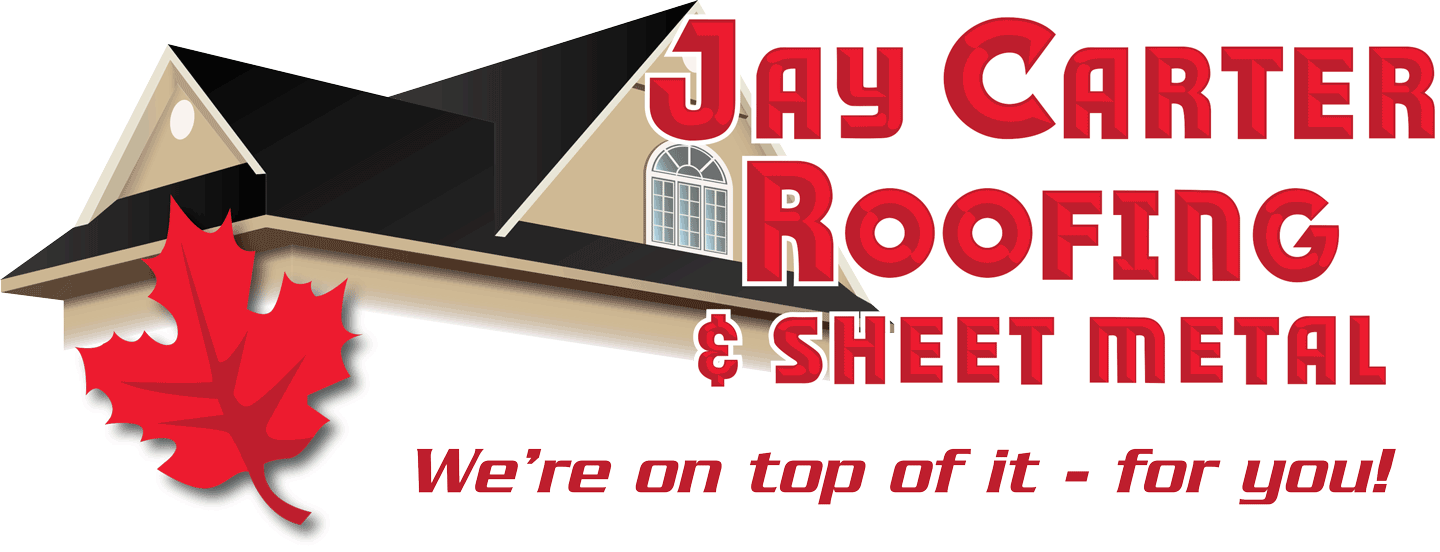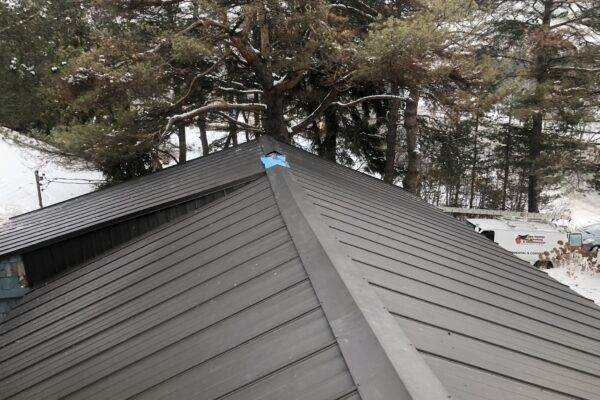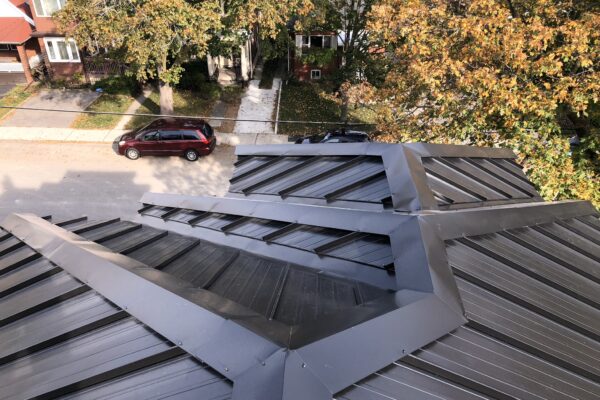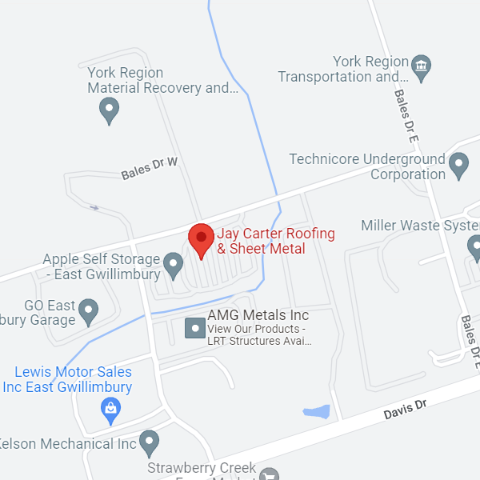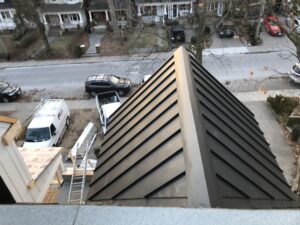 Standing Seam Metal Roofing
Standing Seam Metal Roofing
Metal roofs are energy efficient. Standing seam roofs can be insulated with almost any amount of insulation. Add the radiant barrier effect to this and they are the most energy efficient of any roofing system.
Fiberglass blanket insulation is installed directly under the panels and stretched over the supporting structural members to reduce energy costs and dampen noise. Foam insulation blocks can be used between roof panels and substructures to prevent thermal loss, with a natural radiant barrier effect, and are long lasting, resist decay, discoloration and mildew.
Metal roofs come in several types. Concealed fastener systems include mechanical lock and snap-lock assembly systems. Double-lock, batten seam, and t-panel are among the most common concealed fastener panels.
Flat Roofing Solutions
Built-Up
There are basically two types of built-up roofing (also known as BUR). The difference is that either a coal tar pitch or asphalt material could be used as the waterproofing element between plies of reinforcing felt. Each system has advantages and disadvantages.
Modified Bitumen
Membranes are hybrids of the built up-system, only pre-manufactured in the factory. The products come in rolls, and are modified asphalt or coal tar systems with rubber added for low temperature and elongation characteristics. These products typically use a built-up membrane underlayment before application of the final modified bitumen membrane. Modified bitumen membranes can be torch applied, self adhered or mopped in place with hot bitumen. They are always surfaced with some type of topping system.
Single-Ply
Single-ply roofing systems are just that, a single ply of a roofing material made from several types of polymer plastics and rubbers. TPO and PVC are commonly used materials in the single-ply category.
EPDM
Ethylene Propylene Diene Monomer is manufactured into large sheets for application to insulation on a roof. The material can be loose laid and ballasted with rock or pavers to hold the membrane in place. It can also be fully or partially adhered as well. Seams and the membrane are adhered with contact adhesives, with seams sometimes joined with a sealant. Toppings may or may not be required by the manufacturer in many cases.
